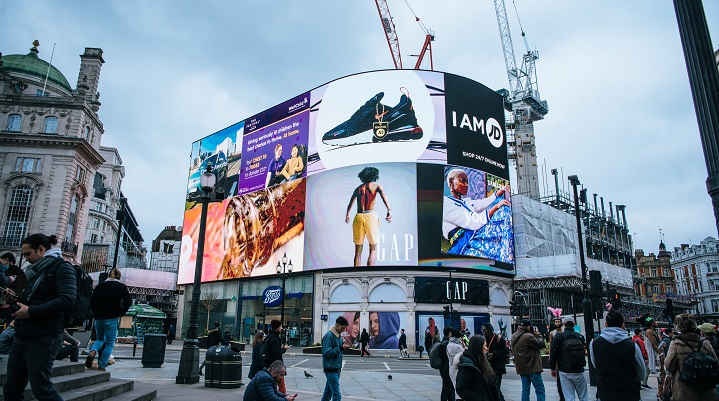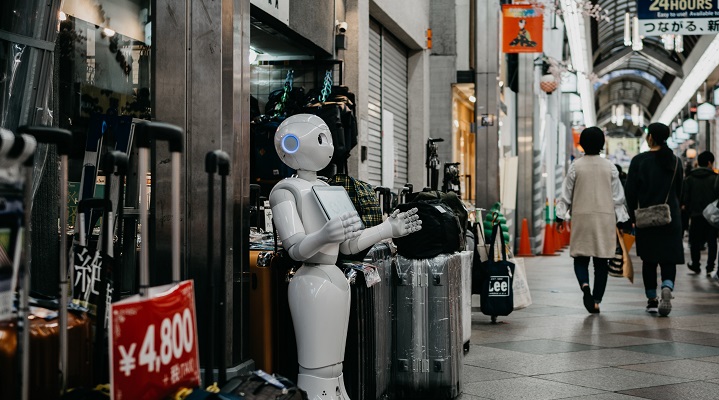Ten years ago, who would have thought that we could one day buy anything we want online and have it delivered to our door in a matter of hours? Or that we could use our smartphones to scan items in-store and instantly compare prices across different brands?
The retail industry is constantly evolving, and as we head into 2023, there are plenty of exciting technology trends to look out for. Here are just a few to kick things off.
The rise and rise of AI
In 2023, we can expect to see a deeper integration of artificial intelligence (AI) into the world of retail. With new applications on the horizon, AI is set to play an ever growing role in improving not only customer experience, but also store efficiency and operations. From smart shopping carts and intelligent buying assistants, to dynamic pricing algorithms and inventory tracking systems, retailers will have access to a wealth of powerful tools that enhance their ability to meet customers’ needs and respond quickly to changes in the market.
Thanks to AI advances, a new generation of software is now capable of helping retailers make data-driven decisions, optimise logistics and supply chains, personalise marketing campaigns, and more. Whether it’s a small boutique or a major department store chain, all businesses can harness the potential of this powerful technology.
Some retailers have already embraced machine learning, recognising that the benefits can far outweigh any perceived risks. At Amazon, algorithms are used to track consumer behaviour and adapt product recommendations based on a wide range of factors. This has allowed them to achieve a much higher conversion rate than rival sites like eBay and Walmart. Meanwhile, other companies are using AI to provide a more personalised shopping experience for customers by analysing their browsing and checkout history.
In physical stores, AI can enable retail team members to become more efficient and knowledgeable. Retail workers have access to information about products, promotions, and pricing instantly. In addition, retail teams are better equipped to handle tasks such as stocking shelves and conducting inventory, as AI-powered applications can provide them with real-time data and analysis.
Robotics on the rise
From warehouses to in-store customer service, robots are increasingly being used to streamline operations and improve efficiencies. As we know, the retail industry is under pressure as consumers shift their spending to online retailers. In response, bricks-and-mortar stores are turning to robotics to help cut labour costs and improve efficiency and accuracy. The use of robotics in retail environments is increasing as companies look for ways to improve their competitiveness.
One type of robot that is becoming increasingly popular in retail is the RPA (or robotic process automation). These robots are designed to automate repetitive tasks, freeing up employees to focus on more high-value activities such as customer service and shopping assistance. Robots are being used in stores to do everything from cleaning floors and stocking shelves to providing customer service.
In warehouses at retail businesses including Amazon and UK online grocer Ocado, RPA robots are being used to handle tasks such as picking and packing orders. In stores, RPA robots can be used for tasks such as shelf stocking and inventory management. As RPA technology continues to evolve, it is likely that we will see even more applications for RPA robots in retail environments.

Payment systems evolution
With new payment methods such as e-commerce and mobile payments, people can pay for their purchases quickly and conveniently with just a few simple clicks. Not only do these new methods save customers time, they also present retailers with new opportunities to gain valuable data about consumer preferences and shopping habits. Whether it is through an app on a smartphone or a web-based checkout system, payments are reshaping the way we shop and how businesses operate.
As the world moves increasingly towards digital payments, retailers need to adopt new payment methods to stay competitive. Cryptocurrencies are one type of payment that is on the rise. Using crypto for payments has a number of advantages over traditional payment methods for both shoppers and businesses.
For shoppers, these include increased security, lower transaction costs, and speed. These payments can be made quickly and easily from a mobile device anywhere in the world. As more shoppers become comfortable using cryptocurrencies, we expect them to become a popular payment method for e-commerce businesses with crypto payment gateways.
For businesses, crypto payments eliminate the need for third-party payment processors and can help to reduce transaction fees. In addition, businesses can avoid chargebacks and fraud with crypto payments.

Digital signage: A new way to interact
Over the past few years, visual communication technologies have drastically changed with larger, higher quality screens and colours. In retail environments, digital signage has become increasingly popular, offering shoppers a variety of new ways to interact with products and services.
For example, Bloomingdale’s has an interactive display in their windows, where customers can “try on” different pairs of sunglasses simply by standing in front of the screen. At Decathlon, shoppers can interact with large in-store displays, browse products, add them to cart and make payments. While the store staff pick and pack the order for them, shoppers can browse around the store and test products.
One major advantage of digital signage is that it can facilitate dynamic, personalised experiences for individual customers. For instance, interactive displays can provide tailored product recommendations or promotions based on each shopper’s purchase history and preferences. What’s more, digital signage offers retailers the ability to customise and update content instantly, ensuring that their advertising campaigns always remain fresh and relevant and this, across the entire store network in a few clicks.
In addition to enhancing in-store experiences, digital signage can improve the overall efficiency of retail operations. By equipping employees with handheld devices that allow them to interact with displays and manage customer interactions, businesses can take advantage of real-time data to streamline inventory tracking, optimise staffing decisions, and reduce wait times.
Introducing low-code tools
As businesses in the retail industry continue to face increasing pressures from rising customer expectations and intensifying competition, low-code software development platforms have emerged as powerful tools for speeding up the development process.
With their streamlined and visual approach to building applications, low-code platforms enable retailers to quickly and easily create robust software solutions that meet the specific needs and goals of their businesses. By accelerating time-to-market and eliminating much of the manual and repetitive work involved in traditional software development, these platforms empower retailers to focus on innovation and delivering high-quality experiences for their customers. Low-code will unlock the possibility of quickly launching proof of concepts that would have taken months otherwise.
Additionally, with the surging growth of e-commerce and mobile shopping, low-code platforms are also essential tools for driving omnichannel success. By simplifying integration across channels like web, mobile apps, tablets, kiosks, physical stores, call centres, texting, social media channels, email campaigns and more, these platforms allow retailers to deliver a seamless customer experience, no matter how consumers choose to interact with your brand.
Ultimately, by embracing low-code software development platforms, retailers can build innovative solutions that keep them ahead of the curve in an increasingly competitive market.






